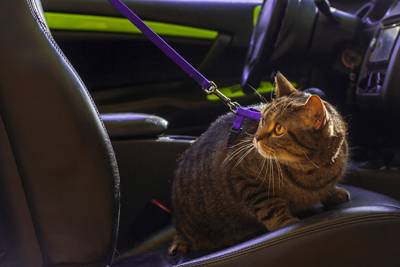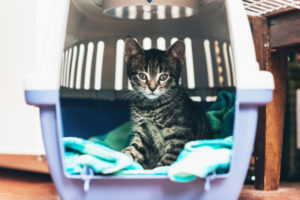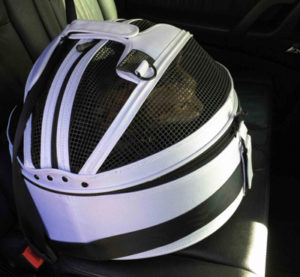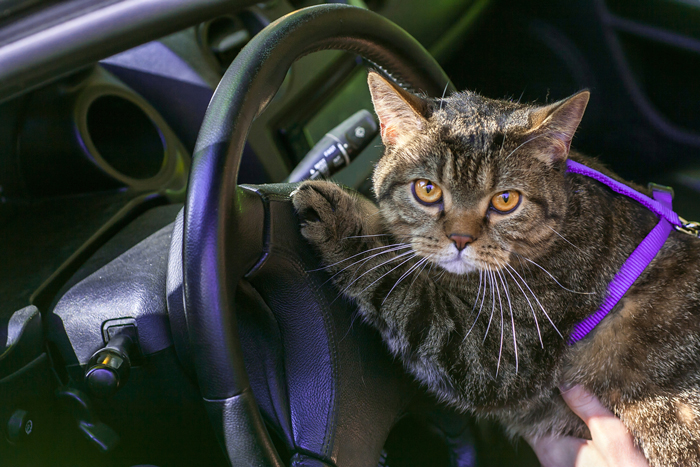A few simple steps can help get your furry companion to like (or at least not hate) traveling in the car.

It’s not only children who immediately start asking, “Are we there yet? Are we there yet?” when they get into a car. Your cat is probably thinking the same thing and voicing her opinion with loud, insistent meows—however, her queries are for an entirely different reason.
For most felines, being in the car holds no joy or attraction. Your cat probably hates every minute of the ride and can’t wait to get out of the car and place all four of her paws back on terra firma.
One of the main reasons cats hate car rides is that they equate them with a trip to the vet; a very real fear for many felines. In addition, there’s also the possibility your cat suffers from motion sickness..
Fortunately, it is possible to teach your cat to enjoy a car ride (motion sickness not withstanding). This is especially important if you travel a lot and plan to take your feline with you as often as possible or opt to take her to granny’s when it’s not practical for her to go with you.

One of the first things to do is to have two cat carriers. One for trips to the vet’s office and another one designated for “fun.” When choosing carriers, you need to think of them as “a home away from home” for your cat. Somewhere she will feel comfortable and safe hanging out in them. The carriers must have ample ventilation and great lookout spaces—especially if your kitty is a curious one.
Since cats enjoy sleeping curled up in the round, I prefer round, dome-shaped carriers for car ride. As an added bonus, the carriers’ domed tops usually unzip and can be removed to create a bed. If your cat is reluctant to get out of a carrier once she’ s in it, a top-loading carrier can make it easier to remove her.
The best way to introduce a cat to a carrier (round or otherwise) is to leave it open somewhere in the house as if you have abandoned it and let your cat discover it for herself. You can put one of your cat’s favorite toys inside or line the carrier with a favorite blanket to entice her to explore it more thoroughly.
When you first put your cat (in the carrier) in the car, take her for only a short ride and come directly back home. Repeat a few times over several weeks. If your cat likes a ride with a view, you can place the carrier on the seat and secure it with the seatbelt so that she can look around. If your cat prefers not to know where she’s going, you can place the carrier on the floor of the back seat. (The carrier is also less likely to become a projectile in that confined space.)

Of course, the sooner you start taking a young cat places, the chances are she will be more adaptable and tolerant of such outings. However, that doesn’t mean you can’t to introduce the idea of travel to an adult cat.
That said, there are no guarantees at any age. My Ziggy was eight-weeks-old when we adopted him and put him in a round carrier to take him home from the animal shelter. He screamed pitifully and still does so to this day, even if I put an anxiety wrap on him and spray the carrier with pheromones to ease his anxiety.
I have concluded that he gets motion sick—and has never outgrown it. As a result, he never goes places for fun. The bottom line: Let your cat have the last say when it comes to riding in the car.
About the Author: Sandy Robins is the 2013 winner of the “Excellence in Journalism and Outstanding Contribution to the Pet Industry Award.” Her work appears on many of the country’s leading pet platforms, such as MSNBC.com, MSN.com and TODAYShow.com. She is a regular contributor and columnist in multiple national and international publications, including Cat Fancy, as well as the author of the award-winning books “Fabulous Felines: Health and Beauty Secrets for the Pampered Cat” and “For The Love of Cats.” Learn more about Sandy on her website or Facebook page. #welovecats





